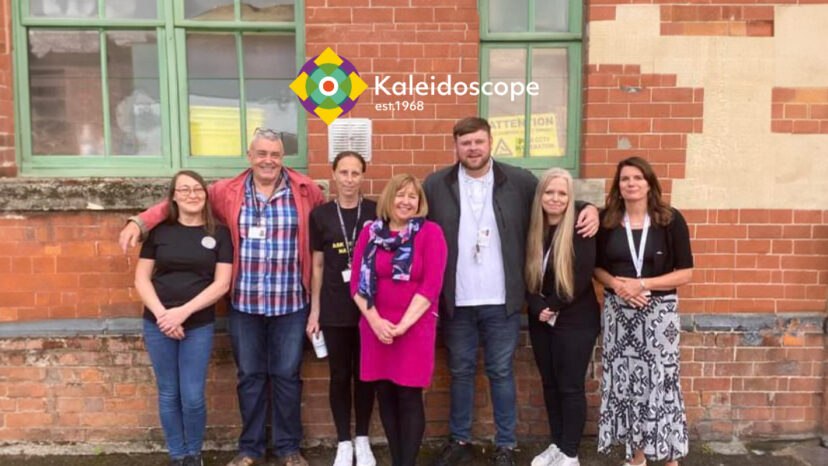Post-COVID, employees are rethinking their lives and quitting their jobs in record numbers–so how can employers beat the Great Resignation? There are plenty of things you can do. It starts with understanding where this is coming from.
Why are people quitting?
The pandemic has given employees, especially those in support and social work, a chance to think about what’s really important to them. They’ve started evaluating how they fit into their workplace culture and looking for more than good pay and office perks such as job satisfaction and work-life balance. Motives for leaving include:
Burnout
Health risks
How they’re treated by management, leadership, and their peers
Lack of growth opportunities
Lack of respect
Low pay
Misalignment with the company's values
Pursuing new career paths
Wanting better benefits and more flexibility
In general, this wave of employees want:
a healthy work-life balance
access to resources that will allow them to do their jobs
more growth opportunities
the autonomy to set their own schedules
to feel like valued team members whose voices are heard
to feel supported and appreciated
The Great Resignation in numbers
According to a survey by Learnlight:
2 out of 5 employees plan to leave their jobs this year–impacting team morale, productivity and business revenue.
Their main reason for leaving: job dissatisfaction.
The main things that would motivate them to stay: flexible work environments, better work-life balance and professional development opportunities
94% would stay in their current jobs if their employers invested in their learning.
Companies are desperate to attract and retain talent, and to do that effectively, they need to understand what their employees want. For example, many haven’t asked if employees are okay with returning to the office full-time–and a study by LiveCareer found that most are not. 81% of professionals enjoy working remotely and 65% say it’s been good for their work-life balance and mental health. After two years of home working, many would rather change jobs than go back to the office.
The Institute for Employment Studies emphasises how recruitment challenges are being driven by exceptionally high labour market turnover. In the first quarter of 2022, there were near-record levels of resignations and a record number of people changing jobs.
Since the pandemic, employees’ priorities have changed, leading to what we now know as ‘The Great Resignation’. So, we did some research of our own. In a recent LinkedIn poll, we asked: what do you seek in a new career?
We found that the majority (48%) were seeking flexible/agile work to achieve that work-life balance. Coming in second with 39% was job satisfaction/culture, and professional development received 13%.
So how can we attract and retain top talent during the Great Resignation? Here are four ways we have found to be effective:
1. Evaluate pay and have transparent pay bands
Everyone wants fair pay. Payscale’s Fair Pay Impact Report reveals that people who feel their employers aren’t transparent about pay are 183% more likely to look for another job. Those who feel their employer is transparent are 65% less likely to look for new opportunities.
Replacing lost talent costs more than paying the going rate, so make sure you check out the industry benchmark for any roles you’re looking to fill (or ask a trusted recruitment partner to check it for you!) and don’t be stingy when it comes to making offers or handing out pay rises.
2. Be flexible about the type of work you offer
J.P. Morgan predicts that the increase in resignations will outlast the pandemic. Hold on to your talent by offering more flexibility: both flexible hours and remote or hybrid working.
The Future Forum Pulse found that flexibility ranks second only to pay: 93% of workers want a flexible schedule and 56% are open to new opportunities that offer that flexibility. And Owl Labs’ State of Remote Work survey found that “one in two people won’t return to jobs that don’t offer remote work after COVID-19 and 77% agree that having the option to work from home would make them happier.”
3. Create more inclusive policies
It’s time to update your workplace policies to be more inclusive and show concern for the whole person rather than just their productivity. In particular, look at flexible working and parental leave policies, as well as changing your hiring policies to minimise unconscious bias in recruitment.
Think about what you can do for employees struggling with physical or mental health problems, care responsibilities, infertility or pregnancy loss. Acknowledging the stresses people face outside work builds loyalty and trust, so when you update your policies, make sure you get feedback from your people to see what’s important to them.
Next, take a look at your holiday calendar: are there any non-Christian holidays on there? Think about how you can change your policies to be more inclusive to people with different spiritual or cultural beliefs. Try offering floating holidays or swappable holidays so your people can celebrate the holidays that are meaningful to them, and you’ll find it much easier to attract and retain diverse employees (as well as enjoying the satisfaction of having done the decent thing).
4. Invest in your company culture
MIT’s Sloan Management Review found that “a toxic company culture is 10.4 times more likely to contribute to attrition than compensation.” In other words, people are ten times more likely to resign because of bad vibes than because of low pay.
To make sure your culture isn’t driving people away, try asking your people for feedback on company decisions, setting up mentorship programmes, building a healthier work environment, dealing swiftly with toxic employees, and making sure leaders are approachable and supportive. Most employees are happier in a “flat hierarchy” where they can contribute to running the company rather than just being told what to do.
Conclusion
“Talent attraction and retention” is really just a fancy term for something older than language: making people happy. Make your employees and potential employees happy, and they’ll genuinely want to work for you. Not only will you improve your talent attraction and retention, but also morale, productivity, and that all-important vibe that matters ten times more to people than the number on their paycheck.
It’s the greatest win-win you can experience as an employer. So what are you waiting for? Get in touch today to find out how we can help you spread that joy.



